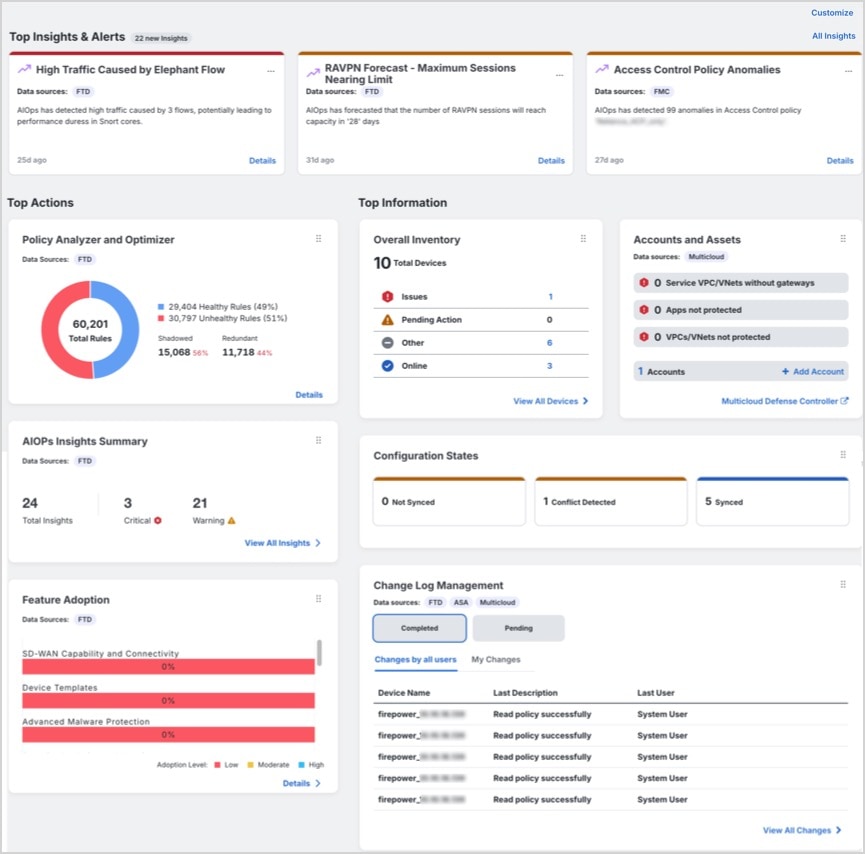About Cisco Security Cloud Control
Cisco Security Cloud Control is a security platform that allows you to manage your security products and achieve security outcomes from a single integrated interface.
Integrating security products in the platform is a streamlined experience. After purchasing your subscriptions to Cisco security products, you receive a single email, with a single claim code for all the subscriptions you purchased. Entering the claim code in your new Security Cloud Control organization provisions all your products to Security Cloud Control simultaneously.
Within Security Cloud Control, user and group management occurs at the platform level. Roles are assigned to these users and groups to define their privileges for administering Security Cloud Control and the integrated products.
Navigation between products and tools is intuitive and standardized with a common platform menu and toolbar for all integrated products.
Security Cloud Control provides these additional core services to all integrated products on the platform:
-
Platform Management: Common services such as managing role-based access control, claiming subscriptions and standardized regional deployment of product instances are provided by Security Cloud Control. By centralizing these functions, Security Cloud Control ensures a consistent user experience in provisioning and managing access across all Cisco security products managed from the platform. Administrators reach these common services from the Platform Management menu in the main navigation bar of Security Cloud Control.
-
AI Assistant: The Cisco AI Assistant in Security Cloud Control is designed to streamline security operations by providing AI-driven insights, automation, and contextual guidance. It assists administrators in managing security policies, troubleshooting issues, and optimizing configurations across Cisco’s security products, including Firewall, Duo, , and Secure Access. By leveraging natural language processing and cross-platform intelligence, the assistant enhances efficiency, accelerates incident response, and simplifies security workflows.
-
Global Search: The ability to search for values across products in the platform.
-
Shared Objects: Creating and managing objects that can be shared across devices and policies.
-
Unified documentation portal: A documentation "Help" experience where all documentation is accessible in one portal.
Products You Can Integrate with Security Cloud Control
From Security Cloud Control, you can manage all of these security products:
-
AI Defense
-
Security Cloud Control Firewall Management
-
Multicloud Defense
-
Secure Access
-
Secure Workload
Products You Can Launch from Security Cloud Control
From Security Cloud Control, you can launch these security products. After launch, these products operate as standalone products and you cannot manage them through Security Cloud Control. You can only claim or deactivate the licenses of such products from Security Cloud Control.
In the Security Cloud Control toolbar, click the nine-dot menu ![]() to launch these products:
to launch these products:
-
Cisco Secure Email Threat Defense
-
Cisco Secure Endpoint
-
Cisco Duo
-
Cisco XDR


 Feedback
Feedback